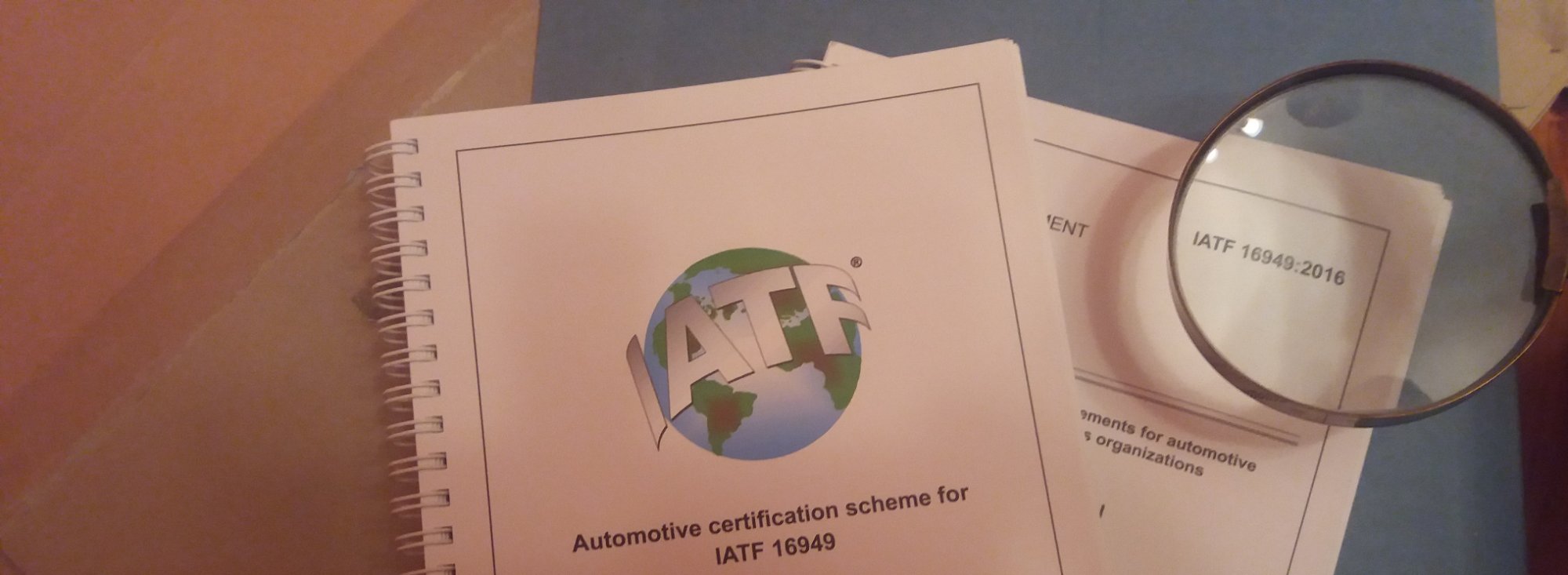A little while ago I created an article on LinkedIn about the use of the term ‘Management Review’, which references an article in CQI’s Quality World magazine going back to 2011. Fast forward to 2024; are we any further forward? Has the world of quality moved on in the last 8 or 13 years?
Taking the original topic of Management Review, how many of us are still working in organisations where there is an annual gathering of the great and the good (or at least those that couldn’t find a good enough excuse to cry off) and we run through an agenda that cuts and pastes all the elements of ISO 9001:2015 Clause 9.3.2 (or IATF 16949:2016 as in the cover image). The droning of the Quality Manager is just about audible above the attendees’ snoring as they skip through the 100-slide deck in the 45 minutes allocated. But hey, the deck and minutes will be great evidence for the next continuing assessment visit and maybe, just maybe we can get the auditor to drop off, too. The whole process is a bit too much like the 2011 masterpiece ‘We Need to Talk About Kevin‘ where senior management discusses the horror and drama of the quality management system.
In a parallel universe, not so far away. Senior managers read reports and attend meetings to discuss strategy, changes to the operating environment, the progress with strategic plans, introducing new products and services, current levels of operational performance, customer feedback, budgets. All of this is Operations Management 101. Well, guess what, these are all ISO 9001 requirements. If senior managers are all over this as part of their day job let’s not bring this to the Management Review!
In the same way, there will be other meetings or other ways to: track business risks including those related to satisfying customers and to the products and services we provide; discussing internal and external audits and what they tell us about our systems; customer complaints and (together or separately) other problems that need to be addressed; suppliers and how well they are performing, and; how we can improve the business. If all these are in place and working then that is our management review complete. We just need to capture the actions and track them to make sure they are completed or we have good reasons as to why we aren’t taking them forward.
In the original LinkedIn article, I floated the idea that an under-pressure Quality Manager might even fabricate records of reviews for meetings that either didn’t take place or where necessary participants didn’t attend. I have yet to be convinced that this doesn’t happen.
The problem is not the minutes. They are just a symptom. The real issue is with leadership from both top management and the organisation’s Quality Manager (however named). Starting with the quality professional, we have to keep it real and look at what is currently happening in the way of monitoring the organisation’s quality performance and identifying any gaps (using ISO 9001:2015 Clause 9.3.2). Having identified what is already being reviewed and the gaps, it is now our responsibility to bring this to the attention of our board/top management in a concise way and at the same time gives them the information necessary to enable them to take action.
Top management have to ensure that the assurance processes they have in place to give them the necessary feedback do so in good time and operate efficiently; with trigger levels to escalate notification for more senior personnel to take action if the KPIs are going in the wrong direction.
Above all the CEO has to get their clear message out: ‘I am not doing anything “for ISO”. If it doesn’t give me useful information on my organisation and its processes it is of no value and I won’t be a part of it!’
Should lead to some interesting discussions!

Leave a Reply